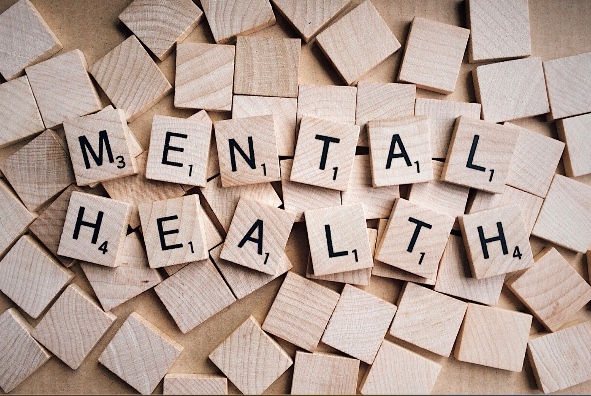Amid Coronavirus rapidly spreading across the world and hitting closer to us in our local communities, the fear we may experience as individuals is not only turning to anxiety but to emotional community contagion. So think about your own fear, and adopting someone else’s fear. That could mean double the preoccupation, and anxiety. That is because emotions are contagious due to our mirror neurons, neurons that make it possible for all of us to mimic each others emotions and behaviors.
During this difficult time of uncertainty and fear, it is important to practice wellness interventions to manage the fear and anxiety we may experience due to the spread of Coronavirus. We not only want to manage our own emotions for ourselves but for those around us, particularly children who have less capacity and coping skills to deal with difficult situations.
Here are a few coping strategies to practice:
1. Practice deep breathing. When the nervous system perceives a threatening or dangerous situation, it activates the fight, flight, freeze response or the sympathetic system (alarm system). When we operate from a place of fear wanting to protect from danger, our decisions, overall health and functioning may be impacted. Deep breathing (deep inhale to the count of 2 to 4 seconds and exhale to the count of 4 to 6 seconds) activates the parasympathetic system (the rest and digest system). Think about these two systems as a car’s gas pedal and break. When the gas pedal is fueling at a high speed, we want to hit the break to slow down. For deep breathing tips, click here.
2. Your feelings and emotions are valid and a normal response to what you are experiencing. Whether it’s fear about you or your family being impacted, anger or frustration towards authorities, health systems, or other emotions, those emotions are a natural response to what your body, mind and nervous system may be experiencing and interpreting as a threat. The important thing is knowing what to do when those emotions arise. Start with the acknowledgement that those emotions are valid. What we want to be mindful of is not to negatively react based on those emotions, we rather want to mindfully respond.
3. Observe your emotions, name them and accept them. The first step to managing emotions is observing them, naming them or as Dr. Daniel Siegel will say “name it to tame it,” and accepting them. The premise of “name it to tame it” is that when strong overwhelming emotions show up, a simple act of naming what we are feeling “I am feeling sad,” “I am noticing anger,” has the potential for the emotion to diminish, allowing us to return to a calmer and more balanced self. That is because when we name our emotions or experience, our executive brain (or the rational part of the brain) has time to figure out what needs to be done. We want to operate from the rational part of our brain not our emotional brain, the part of the brain that gets activated when we have overwhelming emotions and acts based on emotions not facts or rationality.
4. Focus on the facts. After you tame your emotions, turn to the facts– what is it about the situation that made you anxious that you need to know? what is factual about it? and what are the things you need to get clarification on? I visualize anxiety as a big giant monster that grows out of not knowing, we want to feed this monster factual information, or affirmations (positive statements about yourself), in this case affirmations can be based on examples from other times you have overcome. When the monster is fed, it loses its power. Identify some trusted sources you can turn to for information and updates.
5. When sticking to facts does not work and makes you more anxious, focus on what you have control over. The caveat of looking at facts is that some facts may exacerbate how some people feel. But even in situations that seem out of our control, there is still much that is under our control. We can follow recommendations for prevention like washing our hands, using hand sanitizers, calling medical professionals when experiencing symptoms, making decisions such as what events to attend, what to cancel, etc. Work to identify what is under your control.
6. Stay informed but set limits. It is important to stay informed but with boundaries. The news cycle is covering the pandemic nonstop and a quick scroll down through social media shows how saturated we are with Coronavirus news. A scroll down through social media or staying hooked to the news throughout the day has the potential to accelerate the nervous system–the system that activates the fight, flight, freeze response, the response that gets activated upon danger or threat). Rather than being connected all day long, pick some key times to get updates, perhaps three times a day or two during times you may have time to work towards managing fear if your fear response is activated–lunch time, early in the morning, during the evening.
7. Use 5 senses grounding. When our minds ruminate (thinks deeply and repeatedly about something) or worries a lot about the future, we disconnect from our present moment awareness and may miss what is happening right before us. When you notice being stuck in rumination, or worries about the future, take a few minutes to return to the present moment. One quick way or doing so is by activating our 5 senses, focusing on what you see around you (you can even name it, “I see a red chair,” “I see cars driving,” focus on sounds around you, taking notice on smells and scents, noticing body sensations or what your body comes in contact with (feet on the ground, back against a chair or bed, wind against my face), noticing taste.
8. Build a plan. Another way to tame the anxiety monster, is having a plan on what you will do in the event that you and your family are impacted by what you fear. Spend time writing down the contacts of your healthcare providers, local emergency numbers, identifying friends and family to turn to for support, etc. When you build a safety plan, for every worry you may have, list a possible solution. This can be a group activity to do with family, friends, neighbors, etc.
9. Practice self-care. In times of distress is more important than ever to practice self-care or activities to nourish mind, body and spirit. Our principles to self-care include: setting boundaries, getting back to basics (sleeping well, exercising, eating balanced, nourishing and healthy foods), doing things that bring you joy, framing self-care as part of your survival, practicing small dosages of self-care throughout the day connecting with others. For more on our self-care principles, click here.
10. Practicing loving-kindness meditation. When feeling fearful for yourself and others, one practice that can help turn that fearful energy into hope, compassion, love is the practice of sending well wishes to ourselves or others. You can start with yourself, by closing your eyes or keeping them open while gazing at an area, bringing an imagine of yourself to your mind, and bring your hands to your heart and recite:
May I be safe
May I endure
May I be healthy
May I live with ease
May I experience joy
May I experience peace
[add any other wishes/phrases that may evoke ease].
Now do the same, focusing on another person, people or community, bringing an image to your mind of the person or people you are sending loving-kindness to and bringing your hands to your heart.
May she/he/they be safe
May she/he/they endure
May she/he/they be healthy
May she/he/they live with ease
May she/he/they experience joy
May she/he/they experience peace
[add any other wishes/phrases that may evoke ease].
11. Seek professional support. If managing symptoms on your own does not work, and fear or anxiety symptoms persist for two consecutive weeks impacting your overall functioning, seek the professional support of a mental health therapist. Some symptoms to pay attention to are: changes in sleeping patters, change in eating patterns, lack of concentration and focus, constant worry about the future and inability to manage worry or inability to relax, changes in mood such as feeling irritable, constant feeling that something awful will happen. Click here for tips to find mental health providers near you.
For more strategies, click here to access our go-to grounding interventions and click here to access ideas on how to activate feel good chemicals in the brain.
May you be safe and healthy.
Cheryl Aguilar is founding director and therapist at Hope Center for Wellness.

